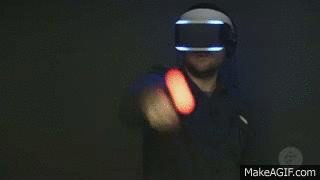ScepticMatt
Member
Well the chart is a rough estimation. with longer persistence and lower frame rate the flicker threshold will be closer to the double flash discrimination rate.That seems reasonable enough, well done. I wonder if it would be possible to illustrate the maximum viable motion resolution in the same chart?
I'm not sure your typical "motion picture resolution" applies here, but let me try a different angle. Maximum motion resolution depends on pursuit velocity, which peaks around 30 degree per second for a horizontal one.
This results in
213 pixels per second for DK1 (640 pixels, 90 degree horizontal FoV)
288 pixels per second for DK2 (960 pixels, 100 degree horizontal FoV)
320 pixels per second for Morpheus (960 pixels, 90 degree horizontal FoV)
333 pixels per second for Valve. (1000 pixels, 90 degree horizontal FoV)
So for a maximum eye pursuit, we get
DK1: 16.6ms persistence (i.e. full persistence 60Hz)
3.55 pixels blur, 141 pixel motion resolution

DK2: 2ms persistence
0.576 pixels blur, 609 pixel motion resolution

My Morpheus guess: 6ms persistence
1.92 pixels blur, 329 pixel motion resolution

My Valve guess: 0.5 ms persistence
0.16 pixel blur, 858 pixel motion resolution






